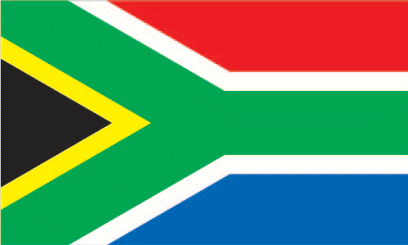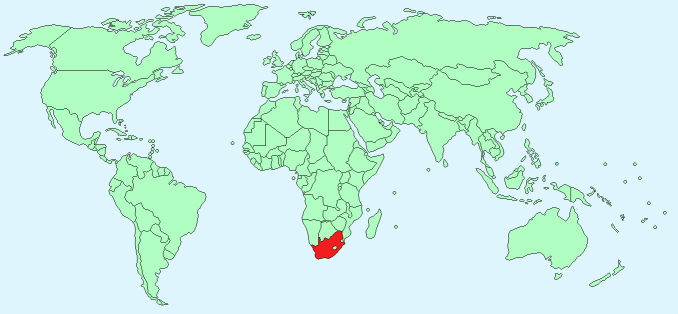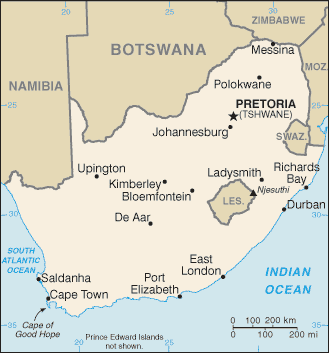South Africa


Continent – Africa
Region – Southern Africa
Size – 1,219,090 km²
Geography – interior plateaux, rugged hills, coastal plain
Language – Isizulu (official) IsiXhosa (official) Afrikaans (official) English (official) other indigenous languages
Religion – Protestant 36.6%, Catholic 7.1%, other Christian 36%, Muslim 1.5%, none 15.1%, other 3.7%
Monetary Unit – South African Rand
Natural Resources – gold, chromium, antimony, coal, iron ore, manganese, nickel, phosphates, tin, rare earth elements, uranium, gem diamonds, platinum, copper, vanadium, salt, natural gas
Agriculture – corn, wheat, sugarcane, fruits, vegetables, beef, poultry, mutton, wool, dairy products
Industry – mining (platinum, gold, chromium, diamonds), automobile assembly, metalworking, machinery, textiles, iron, steel, chemicals, fertilizer, foodstuffs

Neighbouring Countries – Namibia, Botswana, Zimbabwe, Mozambique, Swaziland, Lesotho
Population – 53,675,563 (2015 estimate)
Population Growth Rate – 1.33%
Average Life Expectancy – 62.34
Capital City – Pretoria ( 2.059,000)
Largest City – Johannesburg (9,399,000)
Highest Mountain – Njesuthi (3,408m)
Longest River – Orange (2,200 km in South Africa, Lesotho and Namibia)
Climate – Temperate – mild winters – 7°C to 13°C and warm summers 15°C to 26°C
Yearly Rainfall – 25 cm (approx) mostly May to September
Plant Life – acacia, savannah grasses, baobab, heather, scrub plants, quiver tree, mangrove, ferns
Animal Life – Aardvark, jackal, lion, elephant, wild buffalo, hippopotamus, antelope, salamanders, frogs
Bird Life – ostrich, hornbills, bee-eaters, rollers, kingfishers, hoopoe, woodhoopoe
Harvard Reference for this page:
Heather Y Wheeler. (2016). South Africa. Available: https://www.naturalhistoryonthenet.com/Facts_Figures/Country_Facts/southafrica.htm. Last accessed Tuesday, July 19, 2016
Facts and Figures Pages
